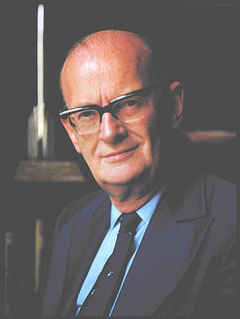Arthur C. Clarke : A Great Man Leaves Us
 Today is a sad day for us all.
Today is a sad day for us all.Today, March 18, 2008, after his "90th orbit of the sun," the great author and theorist Arthur C. Clarke passed away. This brilliant man died at a hospital in Sri Lanka, his adopted home. He died of respiratory complications and heart failure that doctors linked to the post-polio syndrome that kept him in his wheelchair for years. He is the last surviving member of a group of science-fiction writers known as the "Big Three". The other two were Issac Asimov, and Robert A. Heinlein.
Clarke was born on December 16, 1917 in England. He served as a radar specialist in the Royal Air Force during World War Two. Trained as a scientist, he is renowned for basing his work on scientific fact and theory rather than pure fiction, hence the term science fiction. Clarke wrote great works of fiction dealing with science and technology. His most notable work is 2001: A Space Odyssey. He also worked with Stanley Kubrick on the groundbreaking film version of the same novel.
This man was well ahead of his time. He was one of the first to suggest the use of satellites orbiting the earth for communications. In the 1940s he forecast that man would reach the moon by the year 2000, which was an idea experts at first dismissed as rubbish. His writings were influential in shaping public interest in space exploration during the 1950s and '60s. When Neil Armstrong landed in 1969, the United States said Clarke "provided the essential intellectual drive that led us to the moon".
Recently, Clarke finished reviewing the final manuscript of his latest novel "The Last Theorem" just days ago. He had also been working on the idea of a "space elevator".
"The golden age of space is only just beginning," Clarke forecast. "Over the next 50 years, thousands of people will travel to earth orbit and then to the moon and beyond. Space travel and space tourism will one day become almost as commonplace as flying to exotic destinations on our own planet."
Let us remember this superior man today for his wonderful mind that was filled with such intellect, complexity and beauty. His last wishes were:
For E.T. to call
For man to kick his oil habit
For peace in Sri Lanka

